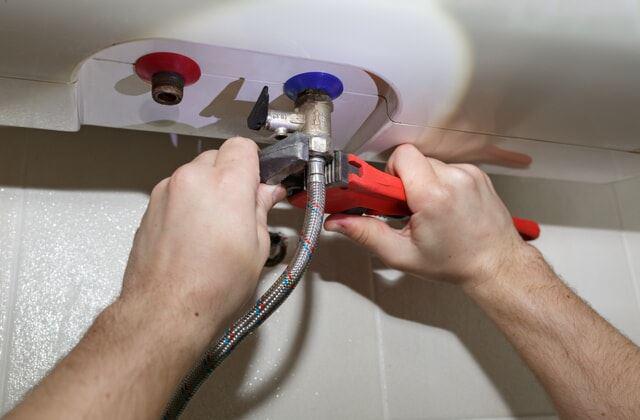Important Advice on Maintaining Your Home's Hot Water System
Important Advice on Maintaining Your Home's Hot Water System
Blog Article
On this page below you will find some dependable expertise regarding Tips on Maintaining a Water Heater.

Warm water is crucial for daily comfort, whether it's for a rejuvenating shower or cleaning dishes. To ensure your hot water system runs effectively and lasts much longer, normal maintenance is crucial. This post gives practical pointers and insights on exactly how to keep your home's hot water system to prevent disturbances and costly repair work.
Intro
Keeping your home's warm water system could appear daunting, yet with a few simple steps, you can ensure it operates smoothly for years to come. This guide covers everything from comprehending your warm water system to do it yourself maintenance suggestions and understanding when to call specialist help.
Significance of Preserving Your Warm Water System
Normal upkeep not just extends the lifespan of your hot water system however additionally guarantees it runs efficiently. Neglecting maintenance can result in reduced effectiveness, greater power costs, and also early failing of the system.
Signs Your Hot Water System Needs Maintenance
Knowing when your warm water system requires focus can stop major issues. Look out for signs such as irregular water temperature level, strange noises from the heater, or rusty water.
Flushing the Water Heater
Flushing your hot water heater gets rid of debris build-up, boosting performance and lengthening its life.
Monitoring and Changing Anode Rods
Anode poles stop rust inside the storage tank. Examining and replacing them when worn out is essential.
Complex Issues Requiring Specialist Aid
Instances include major leaks, electric issues, or if your water heater is continually underperforming.
Regular Professional Upkeep Perks
Professional upkeep can consist of detailed evaluations, tune-ups, and ensuring conformity with security requirements.
Evaluating and Readjusting Temperature Level Settings
Adjusting the temperature settings makes certain optimal performance and safety.
DIY Tips for Upkeep
You can do several upkeep jobs yourself to keep your warm water system in top condition.
Looking for Leaks
Routinely check pipes and links for leakages, as these can result in water damages and greater bills.
Recognizing Your Warm Water System
Before diving right into maintenance tasks, it's helpful to recognize the fundamental components of your warm water system. Generally, this consists of the hot water heater itself, pipes, anode poles, and temperature controls.
Month-to-month Maintenance Tasks
Normal regular monthly checks can help capture minor concerns before they rise.
Evaluating Stress Relief Valves
Examining the pressure safety valve ensures it operates properly and stops excessive stress buildup.
Protecting Pipelines
Protecting warm water pipes lowers warm loss and can conserve energy.
When to Call a Specialist
While DIY upkeep is beneficial, some problems call for expert experience.
Conclusion
Routine upkeep of your home's hot water system is necessary for efficiency, durability, and price savings. By adhering to these tips and understanding when to look for professional assistance, you can make certain a dependable supply of warm water without unanticipated disruptions.
Water Heater Maintenance Tips
Test the TPR Valve
Shut off the power and the cold-water supply valve. Place a bucket under the pipe connected to the temperature-pressure-release (TPR) valve on the top or side of the tank. (This valve opens if the tank pressure gets too high.) Lift the valve’s tab to let some water out, then let go. If water keeps flowing, drain the tank partway, unscrew the old valve with a pipe wrench, and install a new one. Check the Anode Rod
Put a hose to the tank’s drain cock and let out a few gallons of water. Now fit a 1 1/16-inch socket onto the rod’s hex head on top of the heater (or under its top plate) and unscrew the rod. If it’s less than ½ inch thick or coated with calcium, buy a new one, wrap its threads with Teflon tape, put it back in the tank, and tighten securely. Use this segmented rod if headroom above the tank is limited. Drain the Tank and Wash Out Sediment
Drain the remaining water in the tank into the bucket, then stir up the sediment on the tank’s bottom by briefly opening the cold-water supply valve. Drain and repeat until clean water comes out of the hose. Close the drain cock, refill the tank, and turn its power back on. Adjust the Temperature
Find the temperature dial on the side of the tank and unscrew its cover. Adjust the dial to 120 degrees using a flathead screwdriver. For every 10 degrees the temperature is lowered, you can expect to save up to 5 percent in energy costs. Turn the water heater off or the thermostat down to its lowest setting if you plan to be away from home for more than three days. Insulate the Pipes
Buy some self-sticking 3/8-inch-thick foam pipe insulation that matches the pipes’ diameter. Slide the foam over the hot-and cold-water pipes as far as you can reach. Insulating the cold-water pipe prevents condensation in summer. Peel the tape and squeeze the insulation closed. If the pipe is 6 inches or less from the flue, cover it with 1-inch-thick unfaced fiberglass pipe wrap. https://www.thisoldhouse.com/plumbing/21016402/how-to-maintain-a-water-heater

Hopefully you liked our post about What Kind of Maintenance Do Water Heaters Need?. Thanks a lot for finding the time to browse our short article. If you liked our article please be sure to pass it around. Many thanks for being here. Don't hesitate to come visit our website back soon.
Schedule Appointment Report this page